Day 1: Wednesday, August 21
Room A Morning | Electrification
Moderator
 Anthony R Giesey
Anthony R GieseySenior vice president
Evonomy Group
USA
11am
Vehicle electrification through carbon bio-circulation with lower-carbon-intensity fuels
 Dr Xubin Song
Dr Xubin SongCEO
ePower Mobility
USA
Application of low-carbon-intensity (CI) fuels is an essential choice to move forward to ultimately realize the carbon-neutral economy. Renewable biofuels are one of the most realistic motive energy resources to electrify vehicles and meet the current demand to mitigate global warming. As such, vehicle electrification with lower-CI biofuels can take advantage of leveraging existing energy resources and fueling infrastructure so that carbon-reduction contributions could start from a scalable reality today based on maturity of engine/powertrain. Through simulation, the case study will demonstrate the technical advantages of those clean alternative fuels in comparison with carbon-intensive fossil fuels.
What the audience will learn
- Performance comparison of BEV trucks and diesel counterparts
- Exemplary drive costs with Class 8 trucks correlated and sensitive to fuel economy
- Engine-to-battery parity analysis, equivalent payload
- Super-efficient gensets with advanced DHC technology
- Case study of applying lower-CI fuels with electric powertrains
11.20am
Electrification of OHVs – challenges, failure modes and mitigation strategies
 Dr Sneha Lele
Dr Sneha LeleSenior managing engineer
Exponent
USA
The rapid advancement of electric vehicles in the consumer space owing to clean energy alternatives has opened up opportunities for the electrification of other vehicles such as off-highway vehicles. Electrification of OHVs entails replacing the conventional engine with an electric motor and a battery system. But the operating conditions, reliability and efficiency requirements of these vehicles make electrification challenging. This session will discuss some of these challenges, typical failure modes associated specifically with the battery system, and some mitigation strategies to overcome these modes.
What the audience will learn
- Overview of the challenges that OHVs face
- Review of the main components that comprise the battery system
- Case studies discussing typical failure modes of battery systems and mitigation strategies to overcome these
11.40am
Efficient and customized thermal management strategies for electrified machinery
 Josef Graubmann
Josef GraubmannCTO/CSO
YMER Technology GmbH
Germany
The presentation will cover the key challenges within the thermal management of electric and fuel cell machines, the current stage of technology, a modularized and standardized product approach to meet individual demands and requirements, simplified battery thermal management and the technology outlook with natural refrigerants
What the audience will learn
- Challenges of thermal management in electric machines
- Comparison of thermal management in ICE-driven machines and electric machines
- Current stage of technology when it comes to thermal management
- Possible improvements with new refrigerants such as CO2 and R290
- Potential solutions based on a modular platform to support OEMs in the quick development of electric machines
12pm
Hyper-efficient hybrids and the concept construction vehicle of the future
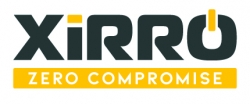 Michael Terzo
Michael TerzoFounder and CEO
Xirro, LLC
USA
In today's digital world, it is harder than ever to get real-world facts and figures on emerging technologies. That's why this presentation will not only present hard research and in-field data showing the mega-sized advantages and benefits of hybridization in off-highway vehicles but will also share an inside look into an advanced open-source concept vehicle for a compact track loader and the technology behind it. Join Xirro for a highly technical, no-holds-barred presentation that cuts through the industry noise and presents a future you can get excited about.
What the audience will learn
- Learn how much Total Cost of Ownership (TCO) can be reduced by implementing hybrid or BEV topologies
- Learn the difference between electro-mechanical actuation and electro-hydraulic and why it’s important!
- What engineering differences are there for hybrid vs BEV power architectures?
- What levels of improvement can be attained in fuel efficiency, engine reduction, available power, noise, and runtime?
- What is open-source mean for off-highway and where it is being implemented
12.20pm
Electrification and autonomous architectures for industrial and off-highway vehicles
 Anthony R Giesey
Anthony R GieseySenior vice president
Evonomy Group
USA
The presentation will provide a comprehensive overview of how Evonomy enables over 150 OEMs worldwide – including manufacturers of agricultural, construction and mining machines – to architect their next-generation electrification and autonomous visions using technologies from over 500 suppliers.
What the audience will learn
- Overview of the Evonomy Ecosystem and how it supports 95%+ of all next-generation off-highway electrification & autonomous architectures
- Learn market trends for industry adoption, including the roadmap to 10kV+ electrified powertrains & fully autonomous worksites
- Learn how technologies from other technologies are being leveraged by off-highway OEMs (e.g., Automotive, Marine)
- Learn about state-of-the-art electrified powertrain, autonomous-enabling sensors, software stacks, and development tools
12.40pm
Battery design analysis from concept design to manufacturing
 Dr Behnam Afsharpoya
Dr Behnam AfsharpoyaSenior industry solution consultant
Dassault Systèmes
USA
Development of complex products such as electrical off-highway vehicles, their batteries and powertrains requires a multi-disciplinary approach to design and validation. An off-highway vehicle is mostly a multi-functional product that not only provides mobility but also performs multiple functions. However, for complex systems with multiple physical domains, it is necessary to integrate several simulation models from different analysis tools. In this presentation, we explain the adjustment of the battery design variables and parameters to meet certain requirements for the electromechanical performance of the vehicle.
What the audience will learn
- Electrical Vehicle Systems engineering
- Battery Design for Electrical vehicles
- Automotive Electrification
- Battery design and manufacturing management
1pm - 2pm
Lunch
Room A Afternoon | Electrification
Moderator
 Dr Ben Gully
Dr Ben GullyChief technologist
SPOC Grid
USA
2pm
Accelerating market adoption of electric machines: Moog Construction's electrification solution reduces risk, lowers total cost and adds productivity value to end users
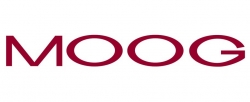 Nathan Keller
Nathan KellerBusiness development manager
Moog Mobile Machinery
USA
Moog Construction's production-ready electrification solution helps OEMs accelerate market adoption of electrified machines, with reduced risk and at a lower total cost. A study on compact track loaders (CTL) compared three system architectures: a traditional diesel-hydraulic machine, a battery-operated vehicle (BOV) with electric traction and an electrically driven hydraulic pump, and a fully electric machine. The study found that Moog Construction's electrified solutions offer improved productivity, increased performance and increased reliability. The electrified machines come with software packages with automation features that improve productivity, enhance safety, reduce downtime and decrease operator fatigue. The software also provides real-time monitoring and feedback to the operator or fleet management. These electrification and software solutions are also applicable to other machines, such as wheel loaders. Moog Construction has developed a fully electric wheel loader with key automation features to showcase the easy feature implementation on electric equipment.
What the audience will learn
- What Moog Construction offers OEMs
- A production-ready electrification solution for CTLs and skid steers offering the most economical way to build an electric machine
- Software that reduces OEM development time and increases value to end users through built-in automation features
- Wheel loader solutions are available with similar results as the CTL and skid steer
2.20pm
Sustainable central electric systems with press-fit technology
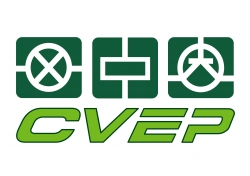 Daniel Busse
Daniel BusseCSO
CVEP GmbH
Germany
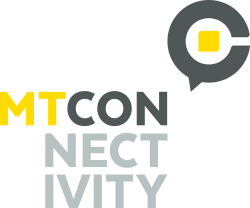 Mario Tolj
Mario ToljCEO
MTConnectivity power2pcb
Germany
CVEP and MTConnectivity present new, innovative technologies. Press-fit technology developed by MTConnectivity offers significant advantages compared to conventional PCBs, for difficult operating conditions and e-mobility – which will be explained with application examples. Based on this technology, CVEP presents a new, sustainable concept for central electrics. The modular system covers both base boards and individual components, e.g. a new generation of CVEP series 2 U2 universal relays. Users receive an eco-friendly overall concept of high performance, prepared for the requirements of e-mobility and commercial vehicle automation. This concept is completed by a patented 48V power switch for e-drive systems. The ergonomic CVEP Hexswitch CAN keypads provide the interface.
What the audience will learn
- Advantages of press-fit technology
- New sustainable central electric concepts for commercial vehicles
- Efficient solutions for high-performance electrical systems and e-mobility
2.40pm
Building a bridge to hydrogen
 Steve Duricky
Steve DurickyGlobal platform manager
Parker Hannifin Corporation
USA
Several heavy-duty manufacturers like Komatsu, Paccar, JCB and Volvo are turning to hydrogen to fuel their next generation of equipment. Whether using an ICE or FCEV, both need to store hydrogen on board. We’ve learned a lot in the past 15 years from powering vehicles with natural gas. What should you consider when designing and maintaining a hydrogen fuel system (HFS)?
This presentation will look at the subsystems of an HFS along with industry standards and best practices.
Join us for an in-depth exploration of hydrogen fuel cell systems and their pivotal role in the evolving landscape of sustainable mining and construction equipment.
This session will delve into market trends, technological drivers, and system parameters shaping the adoption of hydrogen-powered vehicles.
What the audience will learn
- Electric vs. Hydrogen: Analyzing the shifting dynamics and advantages of hydrogen fuel over electric alternatives
- Lessons learned from using natural gas as a fuel and how that will help build a bridge to hydrogen
- Hydrogen Fuel System Design: Exploring the inner workings of hydrogen on-board fuel systems, from filtration and humidification to fluid conveyance, control, and thermal management
- Safety Standards and Material Compatibility: Highlighting crucial standards, certifications, and material considerations to ensure system integrity and longevity
3pm - 3.15pm
Break
3.15pm
Maritime: the toughest and longest-running industrial application of batteries
 Dr Ben Gully
Dr Ben GullyChief technologist
SPOC Grid
USA
This presentation will provide practical and useful guidance on how to ensure the maximum benefit from lithium-ion batteries in industrial applications. Lithium-ion batteries have been in use in commercial maritime applications since 2011 – the longest-running and most demanding industrial application for batteries – encompassing high power, high cycle life and stringent safety requirements. The result has been a great deal of insight regarding the applicability and trade-offs of hybrid versus all electric, as well as charging, DC bus and microgrid architectures. Dr Gully will be presenting on these lessons learned, giving insights applicable for every kind of industrial application.
What the audience will learn
- How to think of batteries – what they are good at and what they are not
- How to get the most from batteries – necessary system design thinking philosophy: focus on the prime mover
- Why the operational profile is so critical for every part of the battery implementation process
- Particular challenges faced and overcome in maritime applications and what they can teach us for other industrial applications
- Charging, DC bus and microgrids – the importance and opportunities presented by the inverter and system architecture
3.35pm
Multiple 3-phase synchronous machine for very high-power-density applications
 Dr Dan Vasile
Dr Dan VasileChief engineer
Drive System Design
USA
There is currently a trend where electrical machines are required to deliver high power and torque but, at the same time, the cost, weight and size of the machine must be as small as possible. This presentation will focus on achieving the requirements but will consider designing motors with more than three phases and placing them in the package of 3-phase motors. The more phases the rotary machine is designed for, the higher its outcome power is.
What the audience will learn
- Why a machine with more than three phases?
- Magnetic design challenges
- Thermal design challenges
- Cost of fabrication
- Required power electronics architecture
3.55pm
Scaling axial flux motor technology – from niche to mainstream
 Matrishvan Raval
Matrishvan RavalHead of product
Turntide Technologies
USA
Axial flux motor topology offers compelling advantage in terms of its compact form factor and high torque and power density. Existing offerings of this technology remain restricted to niche applications but it holds tremendous potential if design innovations to make it a volume-friendly solution are implemented. In this talk we will explore the market and technology landscape of axial flux motors and how design and production innovations can enable its application in high-volume mainstream applications.
What the audience will learn
- Global market size and sectors for axial flux motors
- Technology enabling the axial flux motor topology
- Benefits - commercial and technical - of the axial flux arrangement
- Design and development of high-volume production friendly axial flux motor
4.15pm
Parasitic current management in electrified drive units
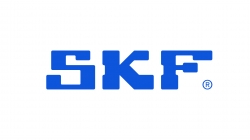 Azeez Abdul
Azeez AbdulProject and program manager, EV Technology
SKF USA Inc.
USA
The push for sustainability and the need to reduce carbon emissions have driven various industries to develop cleaner and more efficient solutions. One of the major trends is the widespread adoption of electric and hybrid technologies. This puts a renewed focus on the efficiency and reliability of bearings in electric drive units. This presentation will emphasize the bearing damage due to high-voltage, high-frequency parasitic currents and offer mitigation solutions.
What the audience will learn
- Parasitic currents
- Bearing technology
- Bearing damage
- EV technology
- Hybrid bearings